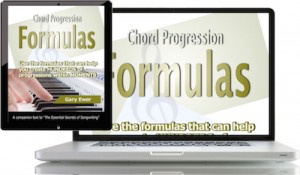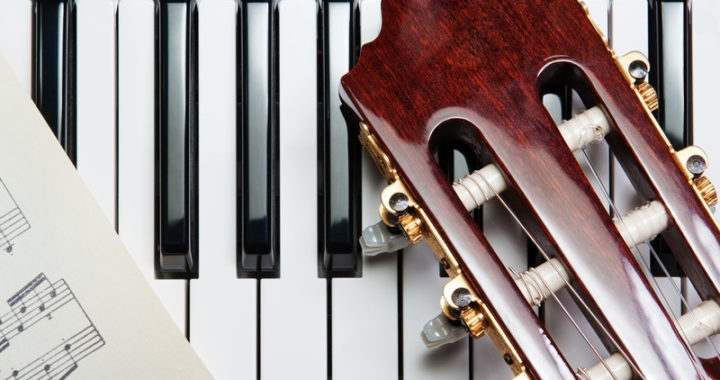A bridge (or middle-8) is the section that usually follows the second chorus of a song. Back in the earlier days of rock & roll, that bridge was likely to be strictly an 8-bar section, but these days the definition has allowed for a lot more creativity. In general, though, you can expect a bridge to do any or most of the following:
- Present a new melody and chord progression.
- Offer new lyrics (that typically finish the song).
- Introduce a new key.
- Be followed by the final chorus repeats, or go to a 3rd verse.
 “Hooks and Riffs: How They Grab Attention, Make Songs Memorable, and Build Your Fan Base.” It’s part of “The Essential Secrets of Songwriting” 10-eBook Bundle. It’s time to really study and discover the most important principles of great songwriting.
“Hooks and Riffs: How They Grab Attention, Make Songs Memorable, and Build Your Fan Base.” It’s part of “The Essential Secrets of Songwriting” 10-eBook Bundle. It’s time to really study and discover the most important principles of great songwriting.
The first point above speaks to the reason why you might use a bridge at all. In most pop songs, once the listener has heard the verse melody and chorus a couple of times, it seems right to offer a new melody and chord progression, if only to keep things from getting too repetitive.
Melodies in a bridge will often move higher in a bid to generate some musical energy. But what should a chord progression do? What makes a good bridge progression? Here are some tips to experiment with:
- For songs where the chorus is in a major key, start the bridge on either the vi-chord or the ii-chord. If your song is in C major, that means starting your bridge on either Am or Dm.
- Allow the first half of your bridge to stay in this new key, or even move into other key areas. So your C major chorus will get followed up by a progression that emphasizes the key of Am (perhaps Am Em F Am…), and maybe even move on from there (maybe Bb F C/E Dm…).
- Allow the second half of your bridge to move back toward the original key of the song. Let’s say you’ve planned for an 8-bar bridge, where the first half of it moves into the relative minor (Am Em F Am). It’s now time to get things moving back toward C major. So you might follow those 4 chords up with: Dm G F G. That G chord will move smoothly back to C major.
- Bridges will tolerate quick changes of key. It’s OK if your bridge progression takes the listener quickly from one key area to another (Am Bb F D7 Gm…), but the closer it gets to finishing, the more solidly the progressions should bring the listener back to the original key.
- Not every song needs a bridge. If your verse and chorus progressions are longer and more involved than the standard 3- or 4-chord variety, your song doesn’t need a bridge. You might follow the second chorus with a 3rd verse, or perhaps an instrumental solo.
Here’s a short list of 5 progressions that might work well for a song bridge. To start with, strum each chord for 4 beats (i.e., 1 chord per bar), but feel free to experiment. The first three assume a chorus in a major key, and the last two will bring you back to a minor key chorus:
- Am F Bb F C/E F Am G (vi IV bVII IV I6 IV vi V)
- Dm F Dm Am Dm F D G (ii IV ii vi ii IV V/V V)
- Am Em G Am Dm C F G (vi iii V vi ii I IV V)
- C Bb F G C Dm Esus4 E (I bVII IV V I ii Vsus4/vi V/vi)
- G G7/F C/E Cm/Eb Dm F Dm G (V V4-2 I6 i6 ii IV ii V)
Written by Gary Ewer. Follow Gary on Twitter.

 “The Essential Secrets of Songwriting” eBook Bundle explores 11 principles of songwriting, and will take your own music to a new level of excellence. That bundle package includes several chord progression collections, plus the eBook “Chord Progression Formulas” – a vital text for any chords-first songwriter.
“The Essential Secrets of Songwriting” eBook Bundle explores 11 principles of songwriting, and will take your own music to a new level of excellence. That bundle package includes several chord progression collections, plus the eBook “Chord Progression Formulas” – a vital text for any chords-first songwriter.











This is great. Thanks very much.
On another point, I wanted to buy the ebundle of material, but I don’t have a PayPal account. Can I buy it just using a credit card?
Thanks again,
Matt Brock
Hi Matt:
Yes, a PayPal account is not necessary. When you click the “Buy Now” button, the first screen you see will give you the option to pay with a credit or Visa Debit card.
Cheers!
-Gary